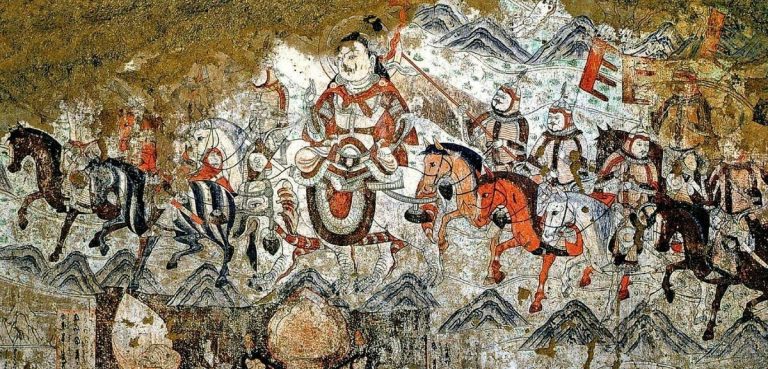Today it’s hard to imagine a life without pants. For both men and women, slacks are a go-to garment for both comfort and convenience. A marvelous discovery in China shows that something akin to jeans existed 3,000 years before Levi Strauss’s time, and the ingenuity of their design may have been far more revolutionary than one would think.
The Turfan man
In 2014, an expedition led by Ulrike Beck and Mayke Wagner of the German Archaeological Institute unearthed a 3,000 year-old pair of pants from a cemetery in Yanghai, located in the Tarim Basin in northwestern China. The deceased also wore a poncho around the waist, a pair of braided bands found around the trouser legs, and a wool band, brandished with four bronze disks and two seashells, around his head.
More than 500 tombs have been excavated in Tarim Basin since the 1970s, with similar apparel being discovered in burial sites across the region.
The pants were woven from wool, and patterned remarkably like our modern-day pants. Upon closer analysis, archaeologists also discovered that they were crafted with a surprising level of engineering.
The fabric used to make these ancient pants was twill—the very same weave used in denim. Twill is woven with diagonally-patterned ribs, which makes it stretchier than other wool threads. Radiocarbon dating determined that similar fabric found in the Hallstatt salt mine in Austria was approximately 3,200 to 3,500 years old.
Success
You are now signed up for our newsletter
Success
Check your email to complete sign up
The lifestyle of Turfan Man was deduced by looking at the other objects found in his grave. Archeologists also found a battle ax, a bridle, and a horse bit, hinting that he may have traveled by horse, perhaps riding into battle wearing his comfortable and flexible trousers.
Thanks to the twill, the Turfan Man’s pants would have been flexible enough to prevent tearing when he stretched his leg to get into a saddle. Additionally, the crotch piece was wide at the center, allowing for extra mobility.
At the knees, tapestry weaving was employed to create a thicker and sturdier fabric. A third method formed the thick waistband which held the pants up, completing the sturdy and comfortable trousers.
The Turfan Man’s pants also sport patterns that hint of distant travels, which likely inspired the diverse ingenuity of the design.
Zigzag patterns at the ankles and calves of the pants, and a design like that of a step pyramid, led Wagner and her team to theorize that the man had made some contact with Mesopotamian people—known for their towering ziggurats that may have served as the inspiration for the pyramid-like patterns.
A pattern of tilted and intersecting T-shapes resembles those found in bronze containers discovered at other ancient sites in modern-day Kazakhstan, China and Western Siberia—areas that had populations dating back to the trousers’ times.
The tapestry weaving is believed to have originated in Southwest Asia, while the twill itself is suspected to have come from Northwest Asia, although the aforementioned discovery of twill in Austria showed that both regions may have developed twill separately.
Altogether, the art of making pants may have involved varied weaving techniques from different cultures across multiple lands. Yanghai’s location at the center of several herding routes—which would later become the Silk Road—also may have facilitated the sharing of designs and ideas, influencing the construction of pants.
According to Victor Mair, a sinologist at the University of Pennsylvania, trouser-making came right after humans began to ride horses, suggesting that these kinds of pants were made by “mobile pastoralists,” and that horse riders were the ones who brought trousers to the Tarim Basin.
People of more ancient times wore gowns, robes, tunics, togas and even “a combination of loincloth and individual leggings,” as in the case of the 5,300-yeard-old body of Otzi the Iceman.
Beck and Wagner’s team consider the ancient trousers “a ground-breaking achievement in the history of cloth making.”
READ MORE:















